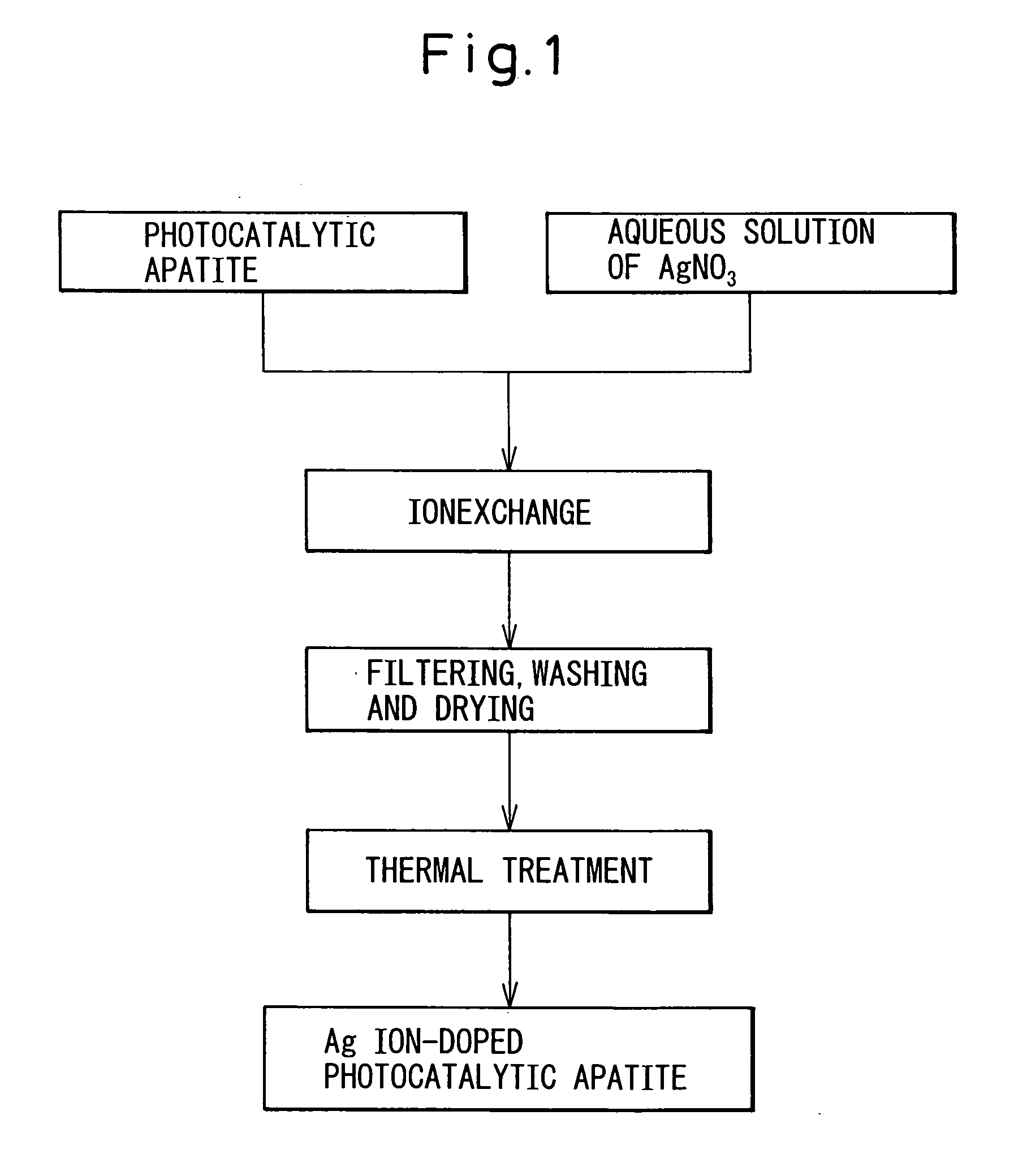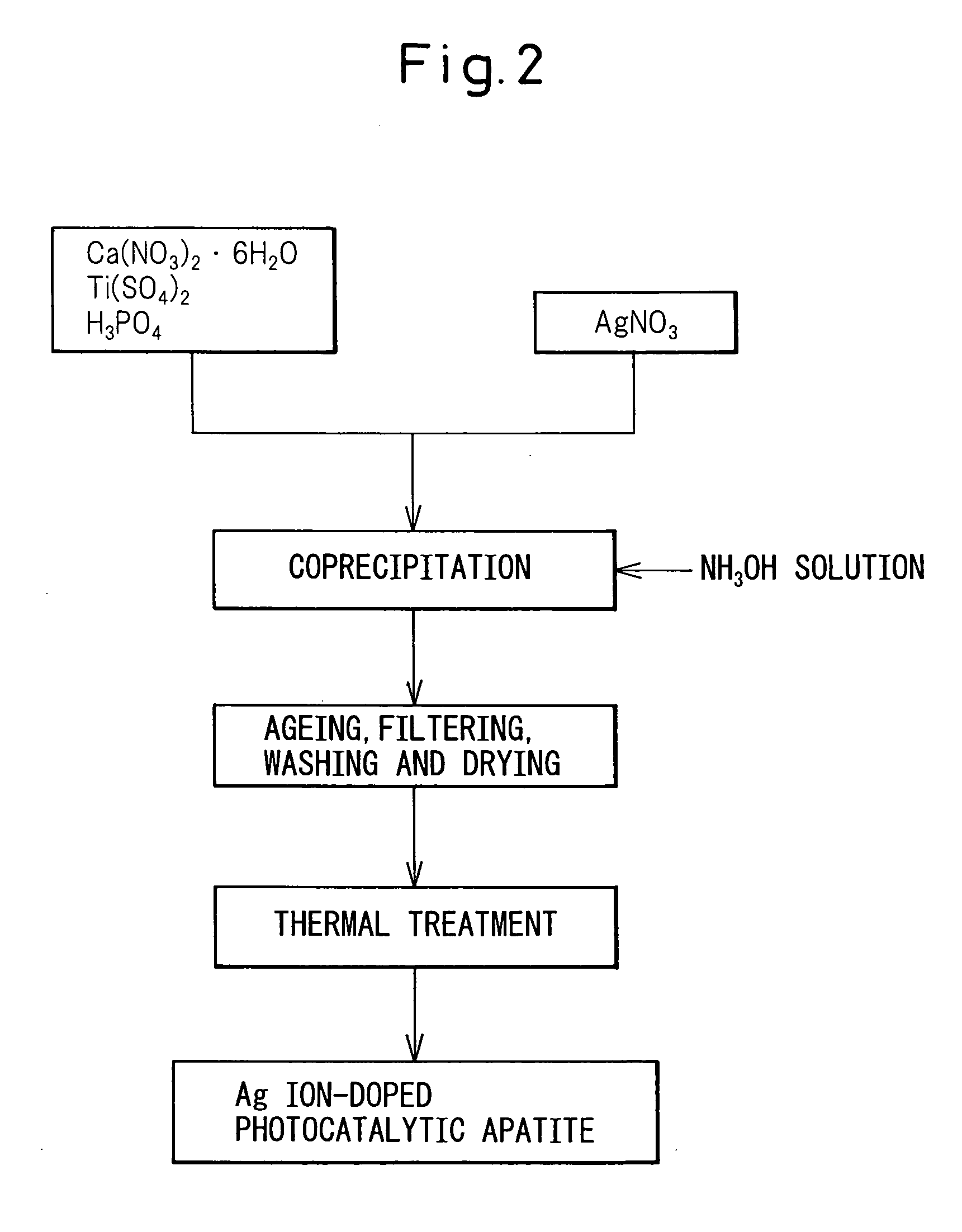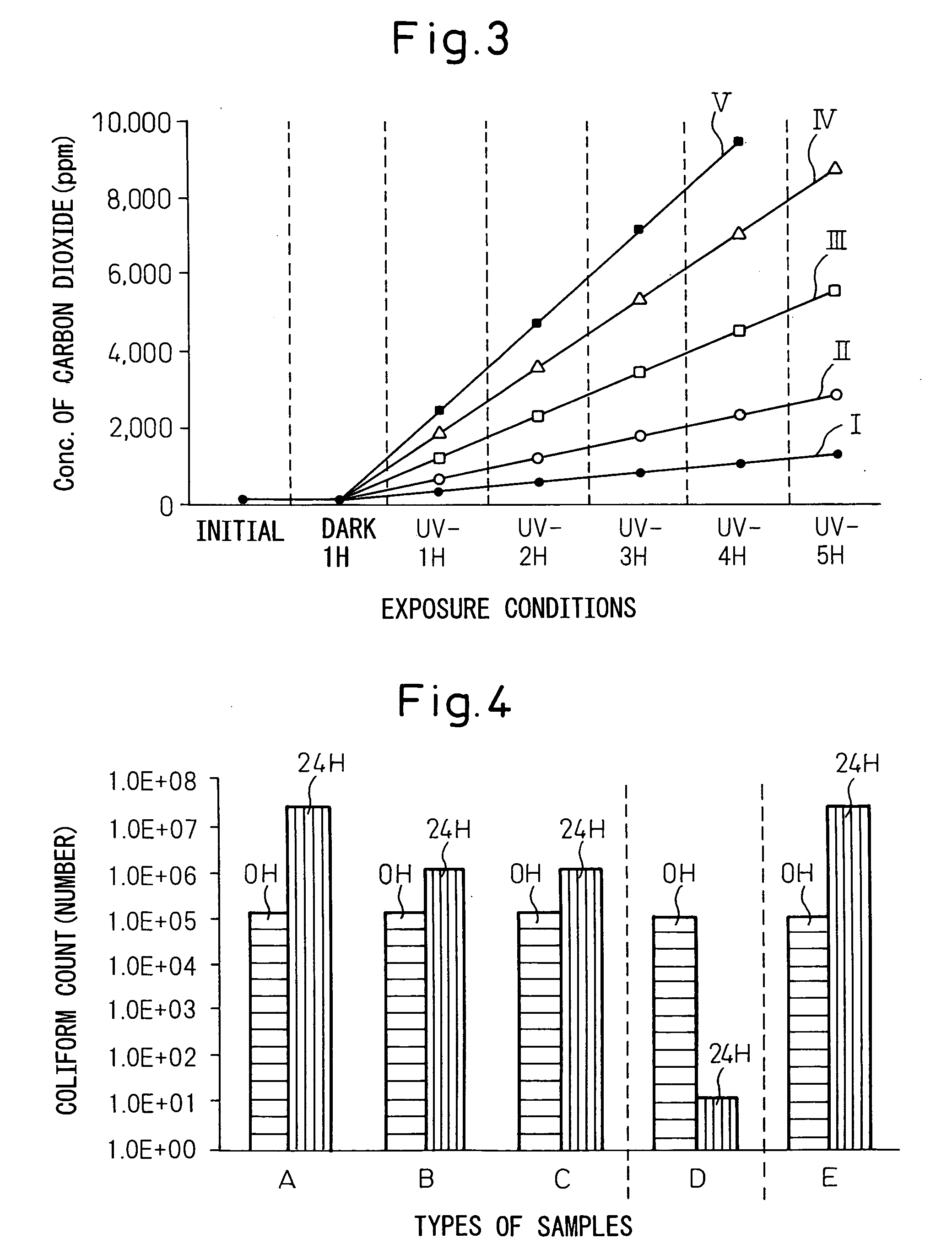Photocatalytic apatite composition as well as production method and article thereof
a photocatalytic apatite and composition technology, applied in the direction of physical/chemical process catalysts, phosphorus halides/oxyhalides, separation processes, etc., can solve the problems of titanium oxide and photocatalytic apatite, which have no adsorption ability, low decomposition efficiency, etc., to achieve excellent antimicrobial properties, easy and simple production, excellent decomposition and adsorption properties
- Summary
- Abstract
- Description
- Claims
- Application Information
AI Technical Summary
Benefits of technology
Problems solved by technology
Method used
Image
Examples
example 1
[0069]In this example, a silver ion-doped photocatalytic apatite was prepared by the dipping method.
[0070]First, 3 g of a commercially available photocatalytic apatite (Ti—CaHAP, “PHOTOHAP PCAP-100”, trade name, produced by Taihei Chemical Industrial Co., Ltd., white powder, average particle diameter: from 3 to 8 μm) was added to 300 milliliter (mL) of an aqueous silver nitrate solution (1×10−5 mol) and stirred by a magnetic stirrer for 5 minutes, and the produced precipitate was filtered, washed with pure water, thoroughly dried in an oven at 100° C., and then thermally treated in an electric furnace at 650° C. for 1 hours. The obtained product was analyzed and confirmed to be a silver ion-doped photocatalytic apatite (Ti—CaHAP).
example 2
[0071]In this example, a silver ion-doped photocatalytic apatite was prepared by the coprecipitation method.
[0072]First, 1 L of pure water subjected to decarbonation was prepared, and 0.1 mol of calcium nitrate, titanium sulfate in a different amount of giving Ti / (Ti+Ca) of 0.1 (molar ratio), 0.06 mol of phosphoric acid and 300 mL of an aqueous silver nitrate solution (1×10−5 mol) were added to the pure water in a nitrogen atmosphere. The obtained mixture was carefully mixed, and the pH value of the mixture was then adjusted to 9.0 by adding 15 mol / L of aqueous ammonia. Subsequently, the obtained suspension was transferred to a Teflon (registered trademark) bottle and ripened at 100° C. over 6 hours. The suspension in which a precipitate was produced was filtered, and the precipitate collected by filtration was washed with 5 L of pure water and dried in a dry oven at 70° C. for 12 hours. The obtained product was analyzed and confirmed to be a silver ion-doped photocatalytic apatite ...
PUM
| Property | Measurement | Unit |
|---|---|---|
| Temperature | aaaaa | aaaaa |
| Photocatalytic properties | aaaaa | aaaaa |
| Antimicrobial properties | aaaaa | aaaaa |
Abstract
Description
Claims
Application Information
 Login to View More
Login to View More - R&D
- Intellectual Property
- Life Sciences
- Materials
- Tech Scout
- Unparalleled Data Quality
- Higher Quality Content
- 60% Fewer Hallucinations
Browse by: Latest US Patents, China's latest patents, Technical Efficacy Thesaurus, Application Domain, Technology Topic, Popular Technical Reports.
© 2025 PatSnap. All rights reserved.Legal|Privacy policy|Modern Slavery Act Transparency Statement|Sitemap|About US| Contact US: help@patsnap.com



